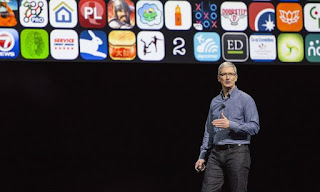Reviews: iPhone 5C review
Unknown
3:07 AM
KEY FEATURES
- Dual-core 1.3GHz Apple A6 processor
- 16/32GB storage
- iOS 7
- 4-inch 1,136 x 640 pixel IPS screen
- 8-megapixel camera with LED flash
- Manufacturer: Apple
- Review Price: £469.99
WHAT IS THE IPHONE 5C?
The iPhone 5C is a cheaper alternative to the iPhone 5S and marks the first time that Apple has changed its mobile line-up. Traditionally, if you were looking for a cheaper iPhone you would have to step back in the series to an older handset, this time it has released two phones at once.
The iPhone is a notoriously expensive phone regardless of which version you buy, and the iPhone 5C has not broken the mould in this sense. At launch it commanded a price tag of £469, but its price has since been slashed to under £300/ $450. You can currently get your hands on the 8GB version from Best Buy for as little as $300. It actually costs roughly the same as the iPhone 5, a phone it shares a lot of its internals with.
The iPhone 5C has ditched the metal body that has been used in the iPhone 5S and Apple’s latest flagships, the iPhone 6 and 6 Plus, and instead opted for a bright, plastic body. Does it bring more than just this superficial change to the table, though?
Watch the iPhone 5C video game reviews
IPHONE 5C – DESIGN
The iPhone 5C is a unibody phone, which means you have no access to the battery or the insides unless you’re willing to fully take it apart.
At a glance, you could be forgiven for mistaking the iPhone 5C for a member of the Nokia Lumia family. It takes design inspiration from Nokia’s range, which finally proved that a plastic phone doesn’t have to feel cheap.
The iPhone 5C is a touch wider and 30g heavier than the iPhone 5S so feels a little weightier in the hand. This isn’t really an area of complaint though. At 9mm thick and just 132g it is still a very lean phone.
You have a choice of five colours for the iPhone 5C – pink, blue, yellow, green and white. They’re much more fun to look at than the slightly austere iPhone 5S, but the colours are not dazzlingly bright, they’re more pastel-looking. They’re a little more muted than the Nokia Lumia phones.
The iPhone 5C feels as immaculately well-made, which you would expect from Apple – there are no gaps or inconsistencies in the border between the plastic back and glass front, no flexing of the body. But glossy plastic was never going to feel as impressive as the aluminium rear of the iPhone 5 and iPhone 5S.
We also found that the plastic nano SIM slot on the phone’s right edge tends to get a little mucky, spoiling the otherwise impressive consistency of the phone’s colouring – the buttons and mute switch are all colour-matched to the rear.
The iPhone 5C has a strong look, but we’re not as impressed by the official Apple iPhone 5C case. It’s a felt-lined rubbery case with cut-out dots on the rear. Match the colours well and you’ll get a funky look, but the way the dots reveal part of the iPhone logo looks clumsy and the rubbery finish attracts dust and fluff to the plastic body within minutes. The concept is decent, but the execution falls short of the standard set by the phone itself. Full reviews
The placement of the iPhone 5C’s buttons and switches are more-or-less identical to those of the iPhone 5. A mute switch sits on the left edge, alongside the volume buttons, while a power button lives up top. It’s a design that simply works on a phone this size, with every button easily accessible without having to use two hands. This is one of the main benefits of a smaller phone like this – it’s a much less intimidating presence than any high-end Android phone.
If you’re upgrading from a pre-iPhone 5 Apple phone, though, there are some new-ish things to get used to. The iPhone 5C uses a tiny nano SIM, and the Lightning port introduced by the iPhone 5. The port may be a consideration if you have a swanky high-end speaker dock that won’t fit an iPhone 5C – although Apple does offer an adapter for the rather princely sum of £25.
Unfortunately the iPhone 5C misses out on what’s probably the biggest hardware innovation of the iPhone 5S – the Touch ID fingerprint scanner. This lets you secure your phone against the fingers of any more mischievous friends without using a passcode. It’s a genuinely useful feature, but here you’ll either have to use the passcode or go without that extra layer of protection.
IPHONE 5C – SCREEN
Fact of life, Just like the iPhone 5 and iPhone 5S, the iPhone 5C has a 4-inch screen. It’s smaller than every Android phone at the price, but quality-wise it’s excellent.
Side-by-side we couldn’t tell any big differences between this display and the iPhone 5S’s. They use exactly the same type of panel. It’s a top-quality IPS panel that offers superb colour reproduction, excellent contrast and startling peak brightness.
The iPhone 5C uses a 1,136 x 640 pixel screen. The resulting 326ppi pixel density is the same pixel pitch that saw the introduction of the term ‘Retina’ display – meaning so sharp you can’t see the pixels.
Other phones have since far outstripped this pixel density. The HTC One M8 has a 441ppi screen. However, if anyone tells you it’s a reason to buy that phone over the iPhone 5C, they’re wrong. At normal viewing distances there’s little benefit in higher pixel density IPS screens than this. You can only tell much of a difference if you get your eyeballs right up close to the screen – not a good look on the train, and no good for your eyes.
Of course, screen size is an absolutely valid consideration. What the iPhone 5C gains in practicality – it’s so easy to grasp and use one-handed – it loses in other areas. A large screen like the LG G3’s or Samsung Galaxy S5’s offers a better canvas for websites (especially non-mobile ones) and is far, far better as a display for watching videos.
The same could be said for games but, as we’ll cover later, this is made up for by the iPhone’s unbeatable game library.
Relax with animals for kids























